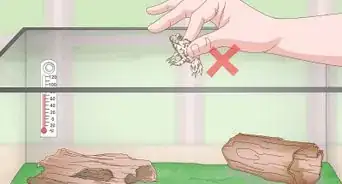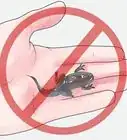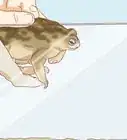This article was co-authored by wikiHow Staff. Our trained team of editors and researchers validate articles for accuracy and comprehensiveness. wikiHow's Content Management Team carefully monitors the work from our editorial staff to ensure that each article is backed by trusted research and meets our high quality standards.
This article has been viewed 86,548 times.
Learn more...
Whether looking for a new amphibian friend or simply trying to hang out with an unexpected visitor for a while, toads are generally easy to get along with. Familiarize yourself with where to find toads, and how to safely catch and house them. Alternatively, if your intention is to rid your lawn of invasive cane toads, learn how to safely capture these surprisingly harmful creatures. Either way, you’re in luck. Toads are slow, predictable, and all around surprisingly easy to catch.
Steps
Finding and Catching a Toad
-
1Find a toad. You can find toads almost anywhere there is consistent moisture. Toads will be especially easy to find near the concrete foundation of buildings and porches after it rains. Check under logs, near stumps, and under rocks near water as well.
- During the spring, male toads will relax in pools of water and call to female toads, hoping to attract company, not to mention the chance to procreate.
- Once you find a toad, don’t make any sudden movements. Approach it slowly.
- Be careful not to squish the toad when moving any rocks or other heavy materials.
-
2Catch and handle a toad gently. Kneel down and cup your hands around the toad slowly but steadily. Cradle them gently in both hands to ensure they don’t jump out and injure themselves.[1]
- If the toad “waters” in your hands, don’t be alarmed - it's not pee, it's water released from their water bladder.
- You cannot get warts from handling toads.
- Don’t handle a toad too much, as the oils on your skin can hurt it after a while.
Advertisement -
3House a toad indoors. If you’re hoping to keep a wild caught toad as a pet, see the corresponding wikiHow article for more specific steps. The first step, of course, is providing your toad a habitat. Use a ten gallon fish tank, or comparable container, with a tight fitting lid.[2]
- If you continue to practice your toad hunting skills, each new acquisition requires about 5 gallons worth of space.
- If you catch baby toads, smaller plastic ‘critter keepers’ from the pet store will be more than sufficient for housing before the toad nears full size – which can be over four inches long!
- Clean the interior of the toad’s enclosure once a month with heavily diluted bleach – shoot for about 5% bleach and 95% water.
- If you only intend to keep your toad for a few days, a box with a reliably closing lid and no holes larger than a dime will also work.
-
4Provide something in which your toad can dig. Toads are all about burrowing, so they need something they can dig into. Use non-fertilized potting soil missed or sphagnum moss. Mix them together to really spoil your toad. This material, called substrate, should be at least 4 inches deep.[3]
- Know that toads are nocturnal, and will likely bury themselves in the substrate during the day – so don’t be worried if you can’t spot your toad.
- Lightly spray the substrate with water every day. This will make it easy for your toad to maneuver around their domain and comfortably lounge in choice pockets of substrate.
- Replace all of the substrate every 2 to 4 months.
-
5Outfit the toad’s home properly. You also need to ensure the toad’s home is appropriately decorated and kept at the right temperature. Similarly, the proper amount of light is vital, as is adequate humidity.[4] Most importantly, provide a wide, shallow pool of water for your toad to soak in.
- Carefully add a piece of wood. Your toad will likely burrow right beneath it.
- A hollowed out log is even more exciting, as a lazy toad can simply post up inside of it.
- As long as there is adequate substrate and you keep it clean and moist, the toad will be able to regulate it’s temperature.
- Room temperature is okay, even with natural cooling of 10-15 degrees F in the evening.
- Toads do not need artificial lighting for warmth.
- Replace the water in their toad tubs daily.
-
6Feed your toad the finest crickets you can find. Toads eat mostly insects in the wild, with growing toads eating over a dozen small insects in a single evening. Since crickets are readily accessible at pet stores, they will be your most reliable food source.[5]
- Toads will also eat minnows, earthworms, and other insects as well. You may have to dangle non-lively critters in front of your toad to bait them into attacking.
- Make sure you only feed your toad food that is smaller in size than the width of your toad’s mouth. Toads are naturally ravenous beasts, and may attempt to swallow things they probably shouldn’t.
- Let your toad eat as much as it wants for fifteen minutes every evening.
- Remove any food they attempt to hoard at the conclusion of their nightly feeding session.
Helping Toads Live Comfortably Outside
-
1Build an outdoor toad abode. No joke: you can literally build a toad home, and soon enough you’ll have a toad neighbor. Find a shady spot near a water source in your yard – even if only a large bowl of water, and stake a claim for toad habitation.[6]
- Toads love small, dark recesses.
- Turn a small ceramic flower pot upside down and prop it up with a rock or other natural materials.
- Leave the ground of your toad abode un-floored. Toads like to dig.
-
2Favor natural landscaping. If you’re looking to befriend a few toads and potentially catch them from time to time just to hang out, you’ll want to make sure your yard is alluring to toads. Natural landscaping is their favorite.[7]
- Create a pond or other water feature in your yard.
- For an especially easy water feature, install a bird bath at ground height.
- A backyard pond will attract all sorts of biodiversity, including toads.
-
3Protect existing toad habitats. Watersheds are particularly sensitive habitats, and amphibians are especially dependent on the health of their environment.[8]
- If there’s a stream or wetland on or near your property, do your part to protect existing toad habitats.
- Do not allow pollution or development on or near your land.
- Consider allowing your yard to serve as a habitat for wildlife generally, as a healthy natural ecosystem is best for all animals, including toads.
- Find information specific to the health of your watershed online, from organizations such as the Environmental Protection Agency.
Catching and Dealing with Cane Toads
-
1Watch out for invasive species. Invasive species – sometimes even toads – can wreak havoc upon an ecosystem. Native toads are especially vulnerable to attack or competition from nonnative amphibians.[9]
- Help biologists who study amphibians by participating in a scientific monitoring program online.
- Learn about the invasive species in your area and try to keep them out of your habitat, so the toads you know are safe.
- Cane toads are a particularly dangerous invasive species, as they can kill larger predators – and even pets – that eat them.
-
2Catch cane toads when they’re still spawn. Finding and removing cane toad eggs is the easiest and most humane way to remove cane toads from where they shouldn’t be.[10]
- Recognize cane toad spawn: long, jelly-like strands with black dots all along the strands.
- Remove strings of eggs from the water and dispose of them in your compost, bury them in your garden, or leave them in the sun to dry out.
-
3Catch cane toad tadpoles by using cane toad poison. It’s also preferable to catch tadpoles before they turn into toads, in part because it is more humane, but also because it is more effective.[11]
- Place a dead cane toad inside a funnel trap and submerge the trap in a body of water where you’ve found evidence of cane toad presence.
- The secretion from cane toads’ shoulders will attract cane toad tadpoles, helping you curb the species presence in waterways around your home by catching them before they take over completely.
- Dispose of tadpoles by burying them in your compost or garden.
-
4Handling adult cane toads. Adult cane toads do have poison glands on the back of their heads – though they don’t release poison unless handled roughly. Still, protect yourself for safety.[12]
- Wear gloves, rubber boots, and a sack to catch adult cane toads.
- Collect cane toads at night using flashlights and other concentrated light sources, which will immobilize toads.
-
5Euthanize toads humanely. Though unpleasant, invasive species must often be killed. Do so in a manner that causes no pain or stress to the toads.[13]
- Put the toad(s) in a plastic container with airholes punched into it.
- Place the container in the fridge for at least four hours. This will put the toad(s) into a coma-like state.
- Place the container in the freezer for at least three days. This will kill the toads as humanly as possible.
- Most communities that struggle with cane toad infestation will have a collection center that will kill and dispose of cane toads for you.
-
6Do not engage in animal cruelty. Do not bash toads with anything or grab them and bash them against hard surfaces. Aside from being incredibly inhumane, bashing cane toads actually presents a risk to your safety; if their poison splatters into your eyes, it can temporarily blind you.[14]
- A golf club is an immature and sadistic item to touch any animal with in any way.
- Similarly, spraying toads with aggressive chemicals is a vile way to treat animals.
- In particular, do not use bleach, hydrogen peroxide, or Dettol. While each of these have a reputation for killing toads, they may simply maim them, and cause immense pain to the animals.
- Furthermore, avoid the use of chemicals to ensure that you are not adding anything that may harm other species to the environment.
Community Q&A
-
QuestionDo toads like crickets best?
 Community AnswerWhile toads like different types of food, most toads do enjoy eating crickets, and crickets are one of the easiest and most popular foods to buy a toad.
Community AnswerWhile toads like different types of food, most toads do enjoy eating crickets, and crickets are one of the easiest and most popular foods to buy a toad. -
QuestionWhat is the difference between a toad and a frog?
 Community AnswerYou can tell most toads and frogs apart by the appearance of their skin and legs. Both amphibians make up the order Anura in the animal kingdom, but there are some key differences. Most frogs have long legs and smooth skins covered in mucus. Toads generally have shorter legs and rougher, thicker skins.
Community AnswerYou can tell most toads and frogs apart by the appearance of their skin and legs. Both amphibians make up the order Anura in the animal kingdom, but there are some key differences. Most frogs have long legs and smooth skins covered in mucus. Toads generally have shorter legs and rougher, thicker skins. -
QuestionHow do I get a toad out from under the couch?
 Community AnswerHave a friend lift the couch and then catch it and put it outside.
Community AnswerHave a friend lift the couch and then catch it and put it outside.
Warnings
- Never pick up a toad unless you know exactly what type of toad it is. Some toads are poisonous and can really harm you. Further, some toads are endangered, and it may even be illegal to disturb them.⧼thumbs_response⧽
References
- ↑ http://www.sfgate.com/homeandgarden/article/Touching-a-toad-may-be-hazardous-to-it-not-you-2589451.php
- ↑ http://www.reptilesncritters.com/care-guide-american-toad.php
- ↑ http://www.reptilesncritters.com/care-guide-american-toad.php
- ↑ http://www.reptilesncritters.com/care-guide-american-toad.php
- ↑ http://www.reptilesncritters.com/care-guide-american-toad.php
- ↑ http://www.nwf.org/How-to-Help/Garden-for-Wildlife/Gardening-Tips/How-to-Attract-Frogs-Toads-and-Other-Amphibians.aspx
- ↑ http://www.nwf.org/How-to-Help/Garden-for-Wildlife/Gardening-Tips/How-to-Attract-Frogs-Toads-and-Other-Amphibians.aspx
- ↑ http://www.nwf.org/How-to-Help/Garden-for-Wildlife/Gardening-Tips/How-to-Attract-Frogs-Toads-and-Other-Amphibians.aspx
- ↑ http://www.nwf.org/How-to-Help/Garden-for-Wildlife/Gardening-Tips/How-to-Attract-Frogs-Toads-and-Other-Amphibians.aspx
About This Article
To catch a toad, start by checking under logs, near stumps, and around rocks near water. Once you spot a toad, kneel down and cup your hands around it slowly but steadily. Then, cradle it gently in both hands to keep it from jumping out and injuring itself. Additionally, make sure to release the toad after a few seconds since the oils in your skin can be harmful to toads and other amphibians. To learn more, including how to keep a toad as a pet, scroll down.
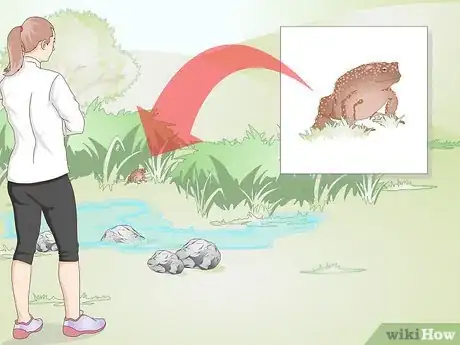
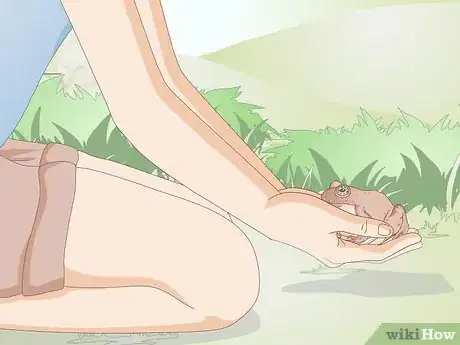
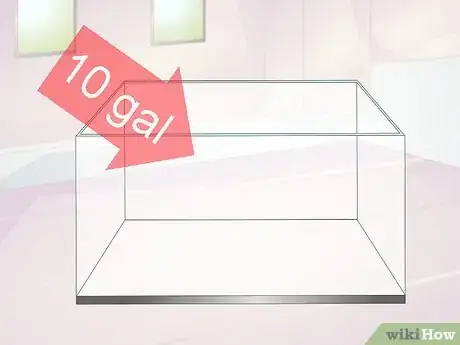
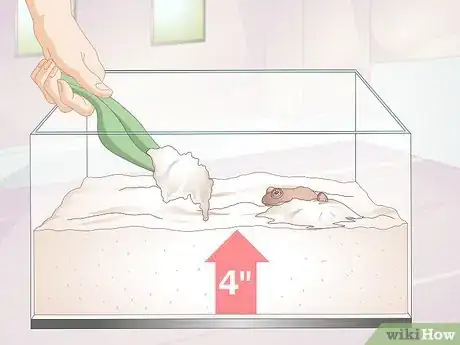

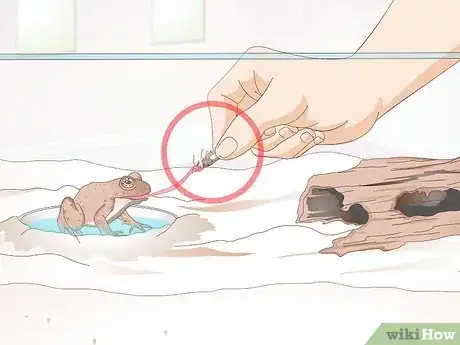

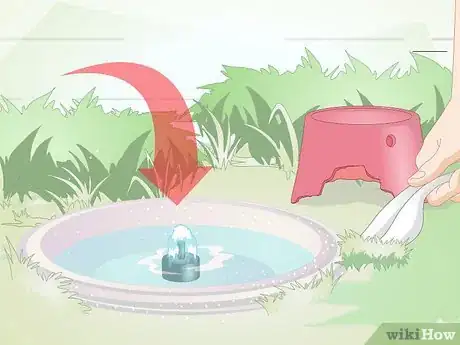
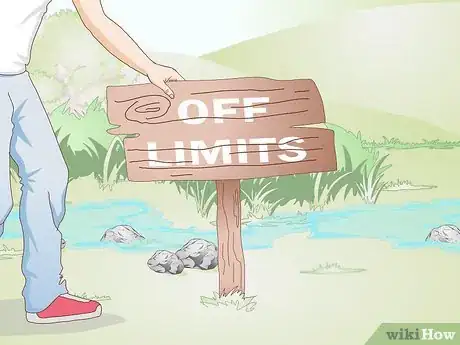
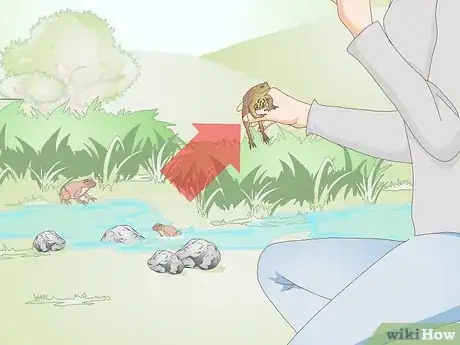


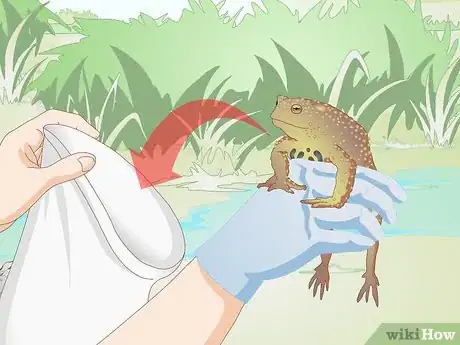
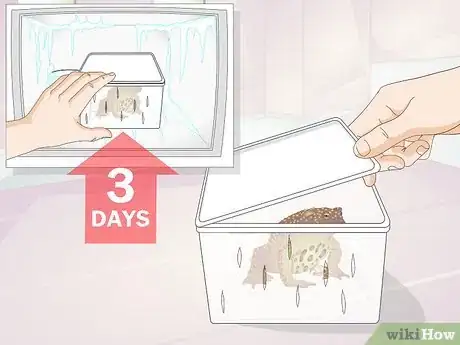
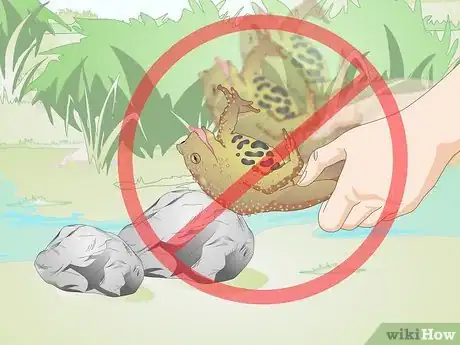


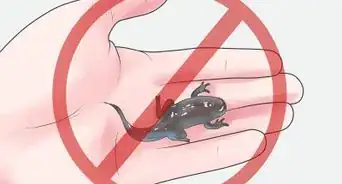
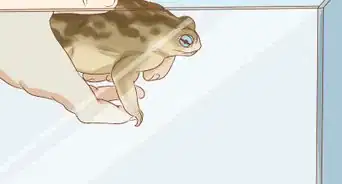

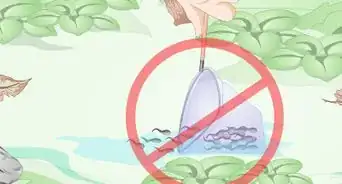

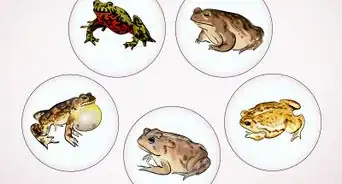

-Step-4.webp)

